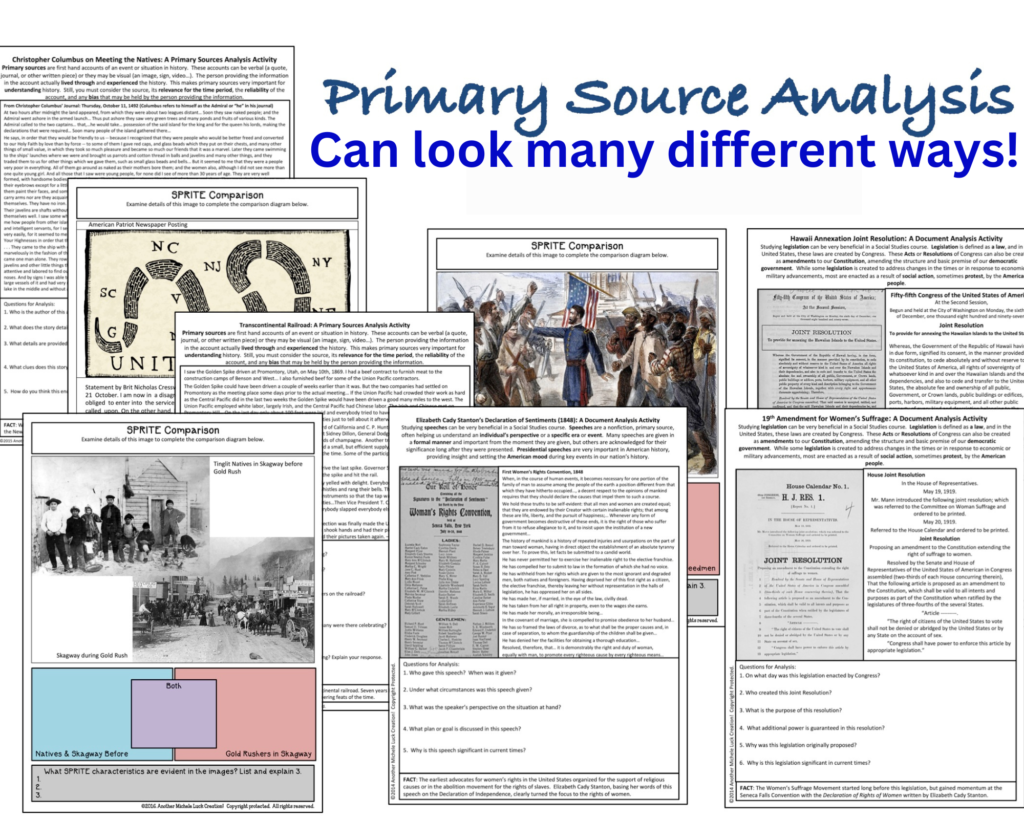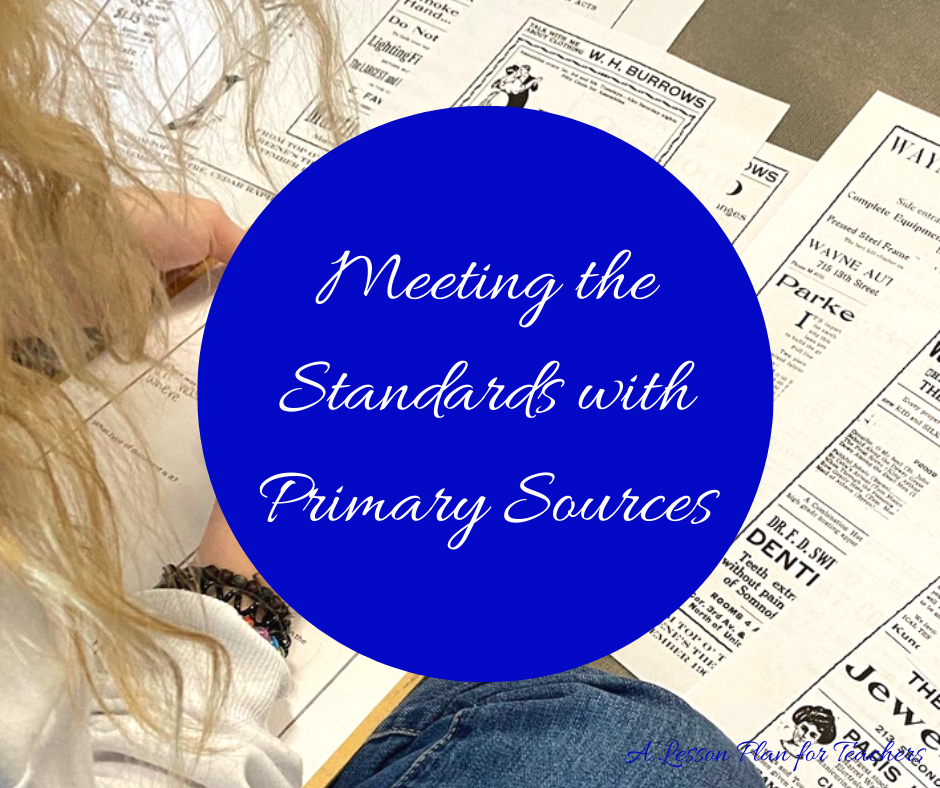Standard 1 in most curriculums call for the following: Cite specific textual evidence to support analysis of primary and secondary sources. This should not be a challenge in a Social Studies classroom. Unfortunately, many classrooms in the past fell dependent on single programs (or textbooks) that left students only exposed to secondary sources. However, we now have so much access to primary sources. It should make our jobs easier!

What is a Primary Source?
First and foremost, I want to revisit my thoughts and ideas on the use of primary (and secondary sources. The point to stress is that “textual evidence” is not that which is ONLY found in a textbook. Textual evidence is written support of an idea or concept on a particular topic. Primary sources go a step further to provide first hand accounts of an event from the past.
Considering that definition, to cite specific textual evidence simply means that students must analyze primary and secondary sources to find the significant meaning in that source. They must be able to tie that information into the overall theme of your study, and should be able to apply the information to other, similar pieces of textual evidence.
Strategies for Teaching with Primary Sources
Spiral Questioning
Ask students questions about the text, image, document section, etc. that increase in the level of complexity. Begin with simple, direct questions. This can be done during lecture, with text reading, while viewing images, or in any class situation where new information is being introduced. Learn more from this post.
- What do you see?
- What does it say?
- What would be the literal meaning?
- What could be the symbolic meaning?
- Why would the author/artist/creator include this information?
- What is significant about this journal entry/poem/image/poster/cartoon…?
- How does this tie into our topic of study?
- What is the bigger picture?
- What is its overall significance in time/history/the world…?
Primary Source Analysis Activities
Provide students opportunities to view content (textual evident) on their own for analysis. Assign activities for individual completion first, then pair & share or allow group discussion. Remind students, that with analysis, answers may vary, and all ideas should be considered and appreciated.
Analysis Assignments, Worksheets, Homework – simple handouts with text, quotes, images, lyrics, charts, data, etc where students are to answer pertinent (spiraling) questions to evaluate the evidence in the piece.
Individual Analysis Activities – Use “Walking Tours” or “Internet Image Searches” to allow students the opportunity to investigate evidence on their own for further evaluation. Encourage students to really look at the evidence and consider it for their own meaning as well as the desired meaning for content understanding.
Group Analysis Activities – Use Centers Activities or Response Groups to encourage students to work in small groups to understand evidence presented to them. Use share outs to review pertinent information and to stress the key points you desire for your topic.
Whole Class Analysis Activities – Turn your lectures into Interactive Lectures where students can take part in the lesson. Allow them to analyze images or quotes before you introduce each new topic or piece of information in your lesson. Allow class discussion, and value the teachable moments that arise in the analysis process.
Application Phase for Primary Source Analysis
Allow students to replicate or create new products based on the textual evidence they have reviewed and analyzed. This step is vital, and while not written out in the standards, it is the crux for Social Studies development. Students must learn to apply their knowledge to reach the final stages of CCSS in any grade level, and in any content area.
- Protest Posters
- Political Campaign Posters
- Journal Entries
- Artwork
- Political Cartoons
- Character Quotes
- Perspective Pieces
Anything that allows your students to show their understanding and ability to apply the information from the textual evidence analyzed in the lesson.
Using Secondary Sources in Your Classroom
One last note on this standard. It addresses the use of both primary and secondary sources in the Social Studies classroom. Using BOTH of these as staples in your lessons is vital. Students must see, hear, and experience the REAL history to understand its significance in our world. Primary sources take what is in a secondary text and bring it to life for the student. And, allowing them to step into the lives of those we study through history does make it more interesting and no longer a class about “all those dead people.” On the flip side, secondary sources help students process that “old” content more easily!
For a variety of Analysis Activities and Interactive Lectures, visit the Analysis Section or Interactive Lecture Notes Section at MicheleLucksSocialStudies.com today! Click on the images to find the resources used to demonstrate this standard!

Happy Teaching!
